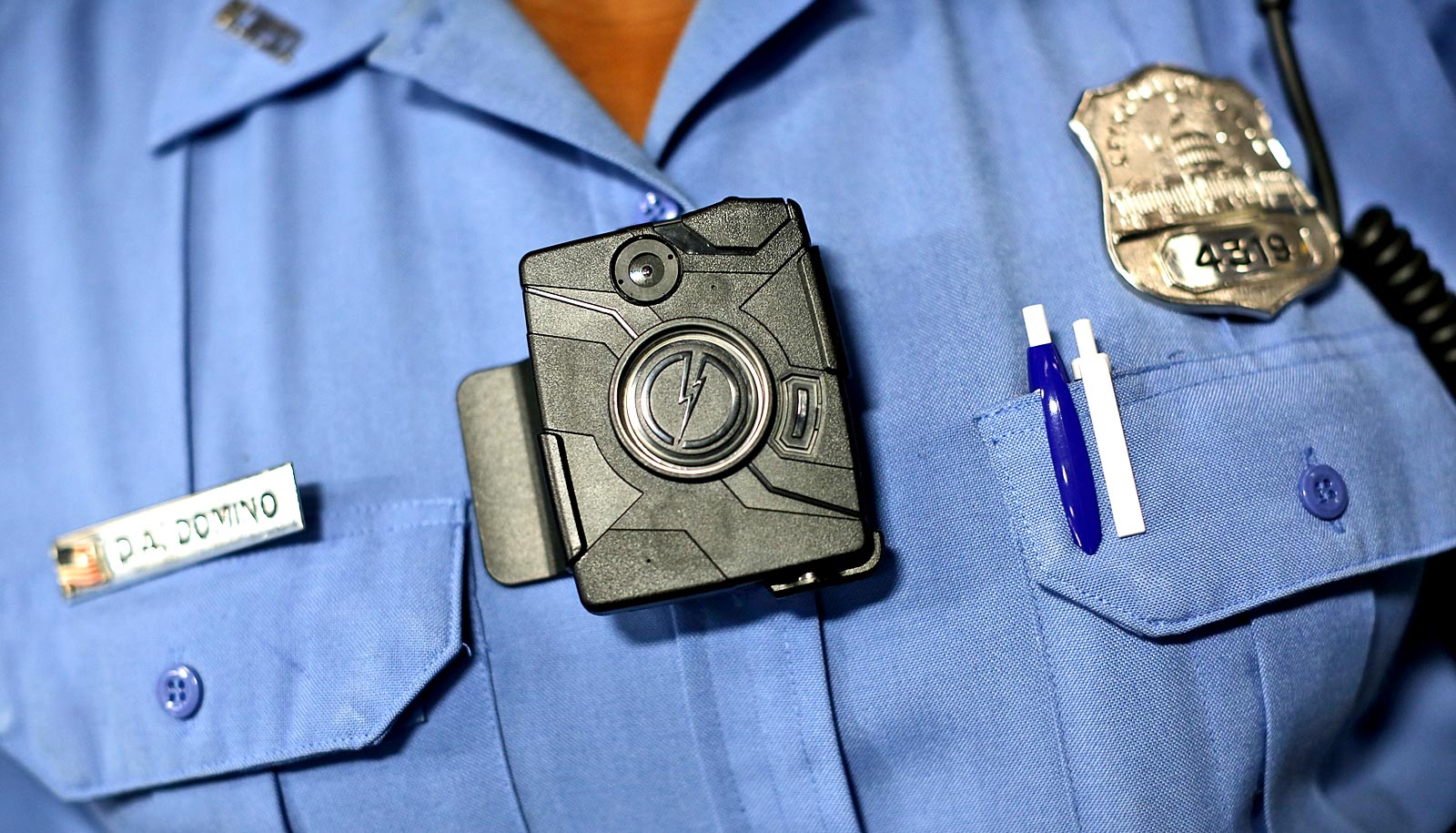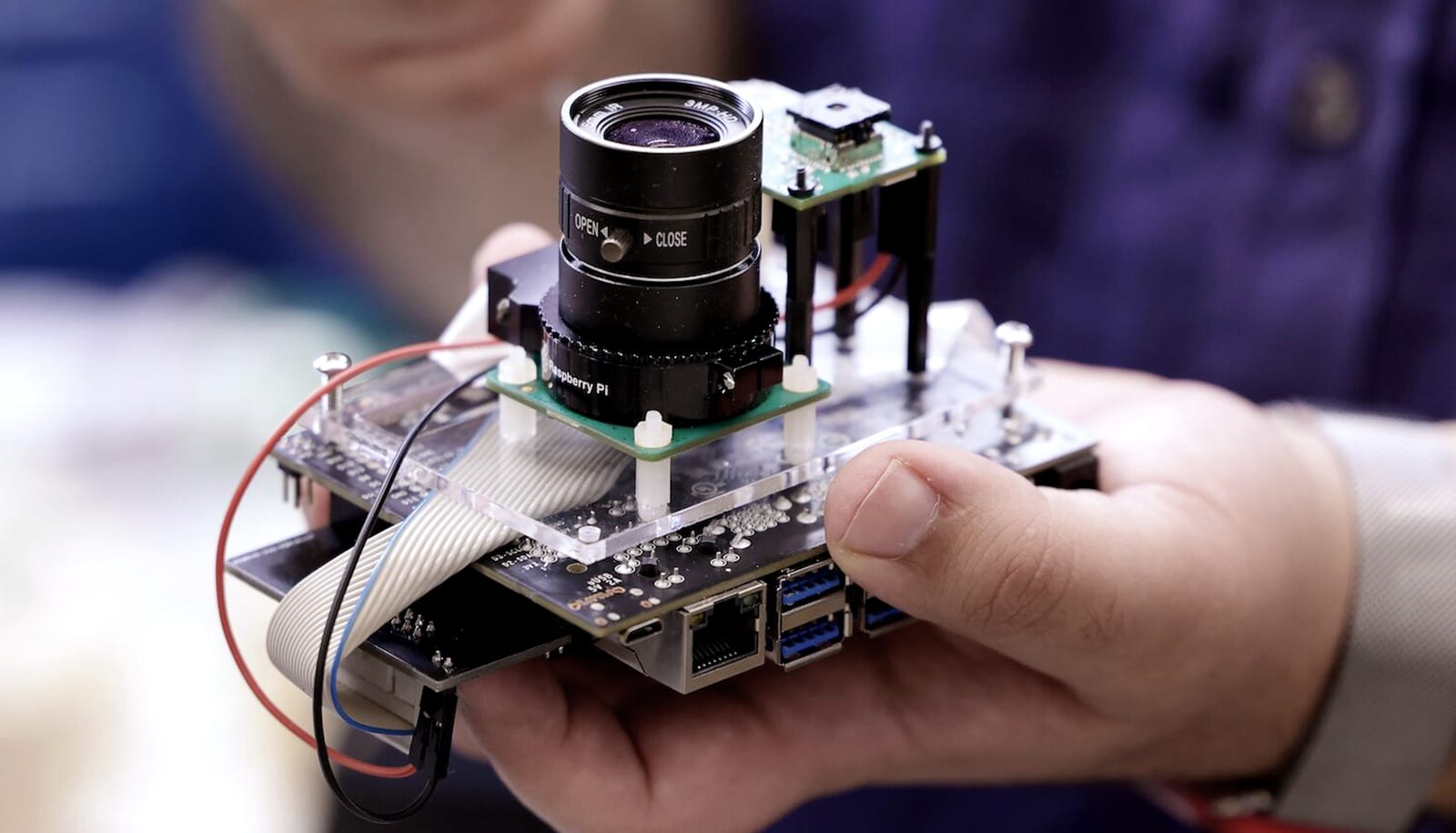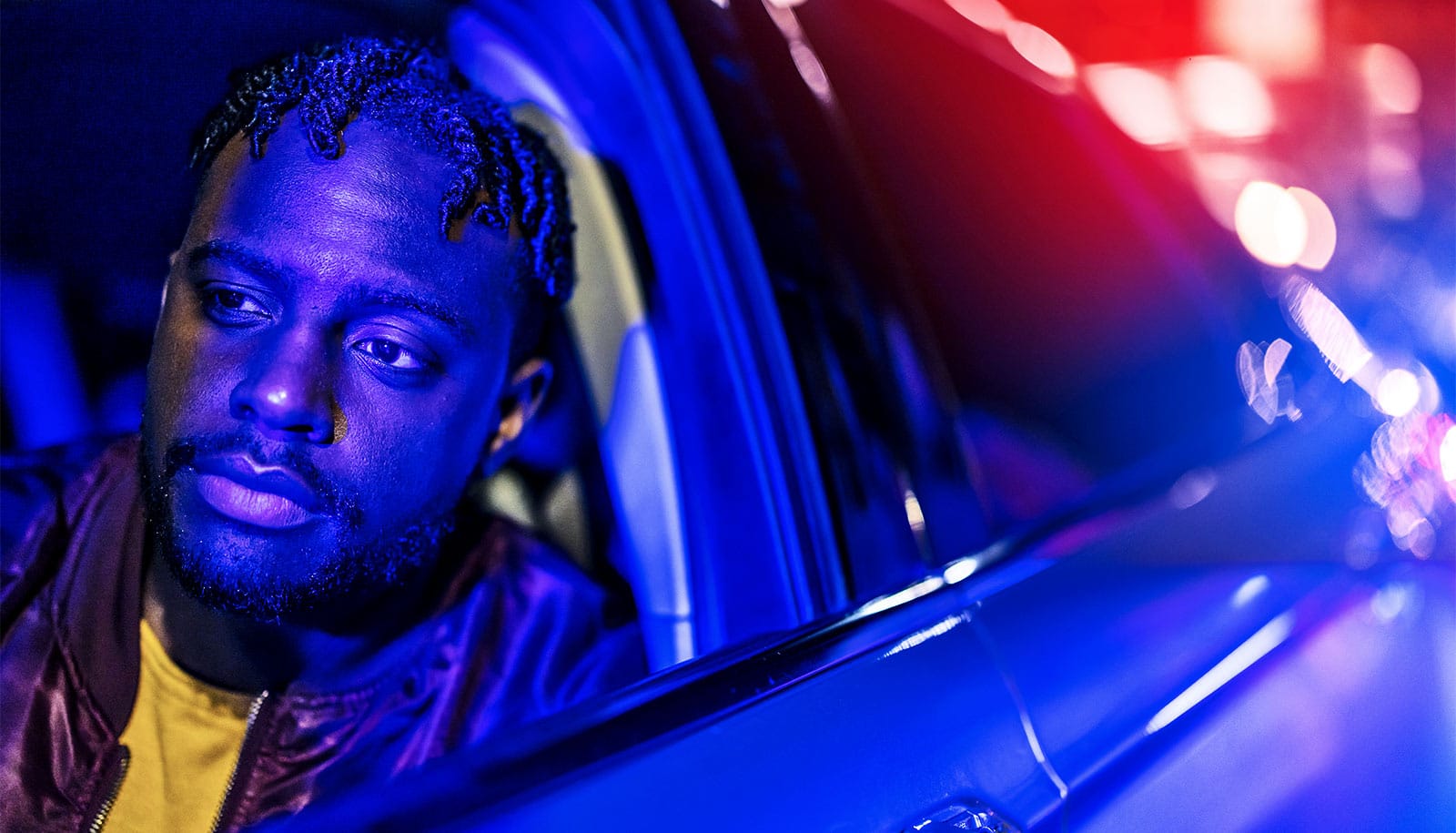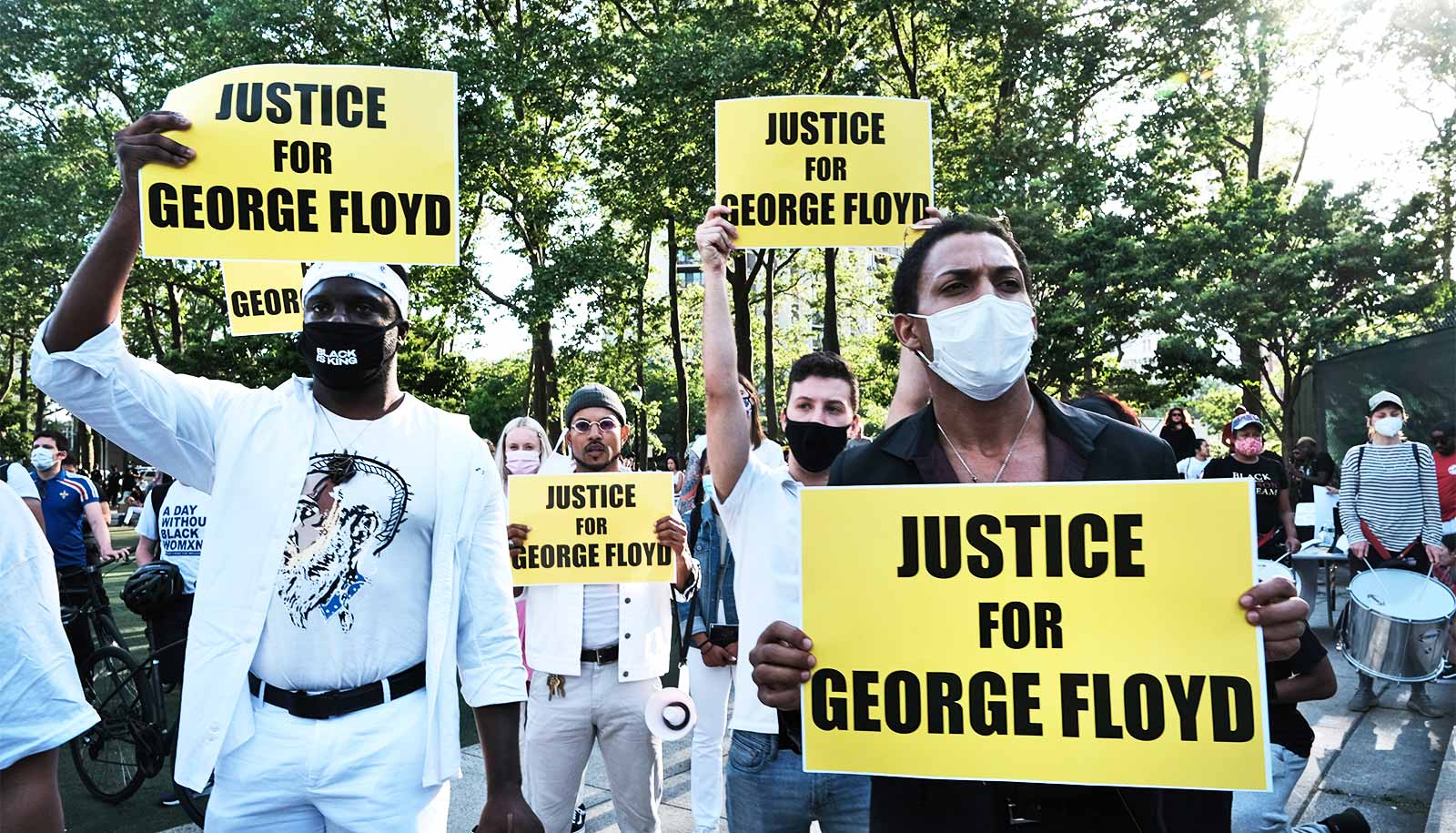Police departments have embraced body-worn cameras as a tool for reducing police misconduct and building trust between law-enforcement officers and the communities they serve, but do they work?
A randomized-controlled trial conducted within the Washington, DC Metropolitan Police Department by The Lab @ DC, involving about 2,200 officers, shows they don’t notably change officer behavior.
Alexander Coppock, a Yale University political science professor and coauthor of the study, talks about the findings and what they say about the abilities of body cameras to prevent abuse:
How did you get involved in the project?
David Yokum, who has since started The Lab @ DC, wanted to do a randomized controlled trial involving the police. He got in touch with my old adviser, Donald Green at Columbia University, who recommended me, as I had been working on experiments using random assignment procedure.
David started taking people out for coffee and pitching the idea to them, and working to find a project that could work out. Body-worn cameras were coming down the pike by then.
Basically, there was an opportunity because of an operational necessity: The Metropolitan Police Department couldn’t roll out body-worn cameras to all of its officers at once. There were capacity problems. A capacity problem creates an opportunity to randomly assign who gets what.
Because half of the cops weren’t able to wear a body-worn camera right away, we had the opportunity to assign cameras to half and assign the other half as a control group.
How did you design the experiment?
Washington, DC is split into seven districts plus several special units. Within each of those groups, we paired off officers who were as similar as possible to each other in a number of categories: years on the force, gender, race, age, past behavior, etc.
It helped the random assignment to have everyone be as comparable as possible. Next, we flipped a coin among the pairs. One of the officers was assigned a camera and trained on the complex MPD policy for using it. They also learned how to upload the video.
Then we just let the data roll in.
What did you discover?
People have high hopes for body-worn cameras, and we showed that the cameras’ effects are much smaller than people’s expectations for them.
We tracked many different variables: How many times did they use force? How many times did they use serious force? How many times did they use serious force against a person of color? How many times did they receive a misconduct complaint? How many times did they have a case go before a judge? How many arrests led to convictions?
We looked at a whole bunch of categories like that. Then we looked to see if the results in the treatment group—the officers with body-worn cameras—were different from those in the control group. The answer was “no” in every category.
Did the findings surprise you?
They kind of blew my mind. This is an enormous intervention into the police officers’ daily routine. They have a new piece of technology placed on the solar plexus. You would expect that the monitoring alone would change their behavior.
I study things in politics that are much subtler than this. We’ll give people a tiny amount of information and see how their attitudes change. This is a blunt instrument. I didn’t know what it was going to change, but we had about 50 dependent variables, and I thought a few of them would move.
Shouldn’t they be more cautious about following the rules? Shouldn’t they be better at filling out paperwork because they have a video to remind them of an interaction? We found no statistically significance difference on anything we examined.
Are the police officers already very diligent about following procedures so the monitoring doesn’t change anything? I thought that the camera monitoring would change officers’ behavior, but that’s why we do experiments.
Do the cameras have potential benefits that your experiment did not capture, such as the value of body-worn camera footage as evidence in investigations?
It is true that body-worn camera footage can be used in a case. Does that mean that the footage helped? What would they have done without the footage? Maybe the camera footage is just a shortcut for the work that they would have otherwise done. To discover how a case might have proceeded without cameras is why we set up the control group—to show what happens when the officers are not equipped with body-worn cameras.
It is definitely true that there are instances that we can imagine where the body worn camera is going to make a difference. They might be too rare to be significant. We tracked 2,200 officers in this study. It is an enormous experiment. We should be able to measure really small effects, but we just didn’t get anything statistically significant.
If you had the resources to conduct a follow up study, what would you examine?
The biggest question the study raises for me is whether absence of any difference occurred because the officers in the control group were influenced by the presence of body-worn cameras on their colleagues. “Spillovers” is the term for that problem. I have a hunch that this didn’t happen, but I don’t know for sure.
There are research designs that might be able to determine whether that is really true. Basically, you’d need a whole bunch of officers who are not in the presence of cameras at all. You’d need to keep those officers sequestered. It would require an experiment five times larger than this one.
What did you learn about policing while conducting the study?
Policing was a new substantive area for me. My work generally focuses on political activity. Previously, I had done things like studying the effects of randomly assigning a lawn sign at a polling place. Those two problems are kind of parallel even though they have nothing to do with each other.
I was surprised by the incredible amount of administrative data that police activity produces. There is a report associated with every interaction with a citizen. Cops have to account for their time in amazing detail.
I didn’t understand the structure of how police respond to incidents. I had imagined it was like in the movies and the police are partnered up in patrol cars and get dispatched to incidents, but that’s not quite how it works. Learning the structure of how the operation works influenced the design of the experiments.
The cops are in the news for terrible things like police brutality. Those events are extraordinarily rare when the dominator is every interaction with a citizen. The MPD, I learned, is one of the departments with the best records in that regard, so I learned about the heterogeneity across police departments.
How should the study influence the discussion over body-worn cameras?
Body-worn cameras are a police technology that enjoys a broad range of support. People who are concerned about police brutality support them as a way to help hold the police accountable. Police groups support them because they feel they have nothing to hide and camera footage can exonerate officers. We see cell phone footage of encounters where an officer does something questionable or wrong. The police want video footage that show positive encounters or encounters where procedures are correctly followed.
Given this broad support, my guess is that departments will continue to use the cameras, but I hope they continue to evaluate them.
I hope that someone is inspired by this study to show that we are wrong. I hope someone does a similarly scaled experiment in Chicago, New York, or some large police department where you have enough officers so that you have enough precision in the experiment to answer these things. Many of the other studies of body-worn cameras don’t use random assignment or they’re really small.
Finally, I hope that when people are considering whether body-worn cameras will be effective in their city, they ask themselves how much different their city is from DC. Is it so different that you would expect a 20 percent reduction in use-of-force incidents?
That is probably too much to ask of body-worn cameras.
Source: Yale University



